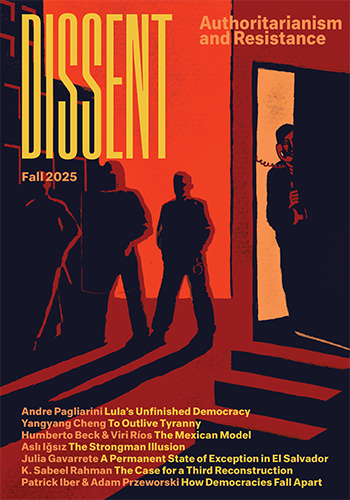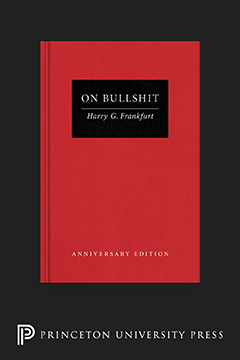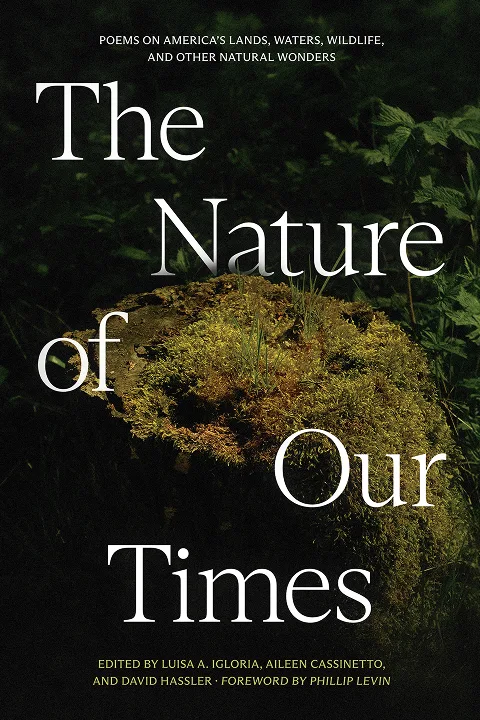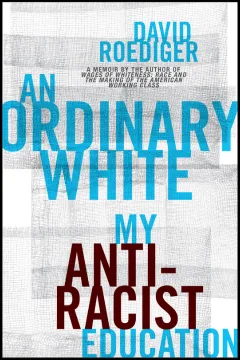The Battle Over Civil Society
The Battle Over Civil Society
An interview with Dylan J. Riley on Trump and the state of American democracy.
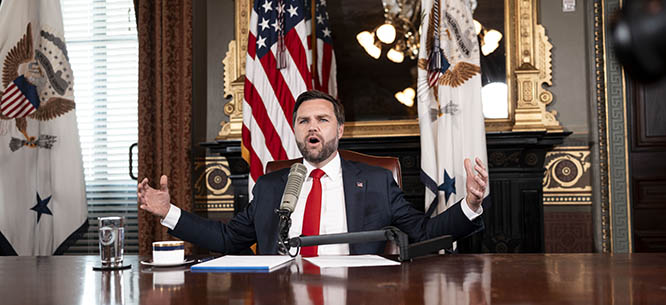
Over the past decade, there’s been an intense, often bitter debate on the left over whether fascism is the correct framework to understand Donald Trump and his movement. I’ve been a fervent partisan for the position that Trumpism is a variant of fascism. Dylan J. Riley, a professor of sociology at Berkeley, has been a skeptic, writing that Trump differs in several important ways from the classic European examples of fascism. But I always found his work, drawing on Alexis de Tocqueville, Karl Marx, and Antonio Gramsci, to be rigorous and historically specific, and read it with great interest. I also believed that if read differently, it supported my side of the debate.
Over the past several months, Riley and I have corresponded and discussed collaborating. In this conversation, we decided to compare notes on the state of American democracy and civil society.
John Ganz: I want to start with your book The Civic Foundations of Fascism in Europe. Political sociologists, especially those drawing on the work of Alexis de Tocqueville, traditionally argue fascist and authoritarian regimes arise in societies without a developed civil society or with a weakened civil society. The idea is that people are atomized, lonely, and vulnerable to mass movements that can take advantage of this atomization and loneliness, and, without all these intermediary institutions, a nation can easily be taken over by the state.
Your book, using the work of Antonio Gramsci, argues the opposite: fascism arose in societies with highly developed and rapidly developing civil societies, with a proliferation of associations, clubs, and organizations—but without hegemonic political parties that could effectively channel the democratic demands that came from this overflowing civil society. When such demands arose, people rejected the old institutions as unrepresentative and sought something more direct, less mediated through parliament and traditional party structures. Fascist movements took advantage of that crisis and offered a solution you called “authoritarian democracy.” Am I getting this right? And was it this understanding that made you hesitant to label Trump a fascist?
Dylan J. Riley: Yes, that’s the argument. Fascist parties required strong civil societies. They had memberships and secretaries and local branches and people marching in the streets and engaging in paramilitary activities against the left. They modeled themselves on socialist and communist parties, especially the socialist parties. That was the struggle out of which fascist parties emerged. I didn’t see the analog to that in Trump’s first term.
I also pointed out other differences. The social basis of Trumpism seemed distinct from interwar fascism. The international context was also very different. Fascism emerged in second-tier powers trying to assert themselves against British global hegemony (now I’m using “hegemony” in its geopolitical sense). Trump’s foreign policy, by contrast, was erratic and timid. It wasn’t directed toward revision in the fascist sense. American isolationism is a peculiar tradition and has become more so. That was my position in the first term.
Ganz: I read your work in the context of the fascism debate that took place on the left over the past ten years or so. Even though it was often used against my position, I found a lot of support for my interpretation in your work.
The weakness of the Republican Party elite in fending off Trump looked to me like a crisis of hegemony. So did the Democrats’ inability to defend the status quo. Trump promised to replace incompetence and inefficiency with more direct intervention. He attacked conservative allies, absorbed them, and they thought they could use him—much like fascist movements co-opting conservative elites.
On foreign policy, I saw “isolationism” differently: not as principled opposition to intervention, but something more like “sovereigntism,” a rejection of international agreements and a view of the world as made up of essentially self-interested and hostile powers. A world of self-interested national powers asserting themselves was closer to the fascist worldview.
As for civil society, many argued that Americans were increasingly atomized, citing Robert D. Putnam’s Bowling Alone. But I thought the internet had perhaps created a new form of civil society, an excess of associative activity and democratic demands beyond the traditional party and state’s representative institutions’ capacity to contain them—similar to what you described in Europe.
I also saw Trumpism as a movement of authoritarian democracy: authoritarian in style but still claiming democratic legitimacy: “the people have spoken, we won, we can do what we want.”
Riley: The online component has become clearer to me in the second term. At first, I saw it mainly as a Twitter spectacle. Now it’s obvious how these infrastructures can rally allies and discipline opponents. It’s analogous to classic fascist mobilization, though the form is different. Instead of party cards and dues—not everyone is going to join the MAGA party—it’s online threats and employer pressure, sometimes promoted from the White House. That is the organizational form emerging now. If you listen carefully to J.D. Vance when he took over Charlie Kirk’s podcast immediately following the assassination, he calls for people to get involved. He even uses the terminology of civil society. He is essentially exhorting people to attack their opponents online and flag posts that express inappropriate views about Kirk.
Ganz: Fascism is often distinguished from other forms of authoritarianism by its drive for mass mobilization. Italian fascism struggled to sustain it; German Nazism was more successful. Trumpism also seems to be attempting this, more now than before.
Riley: Yes, much more in this term. That is a difference we should really emphasize.
Ganz: We now see attacks on civil society organizations, similar to what regimes in India, Hungary, and Russia have done so, especially against George Soros and the Open Society Foundations. The Tocquevillian theory, which is shared to some degree by OSF, sees civil society as a natural defense against authoritarianism. Your Gramscian perspective sees it as contested terrain. So what do you think of our vaunted institutions and our big democratic civil society? Is it such a strength? Is it a weakness? Or is it just a place where things will have to be fought out?
Riley: That is in some ways the crucial question about civil society in the current moment. It is being answered as we sit here. It’s important to emphasize that, of course, civil society in the United States has a vastly different character than the interwar European classic fascist cases. First of all, American civil society is huge. There’s a giant network of 501(c)(3)s. The nonprofit world has thousands and thousands of organizations. It controls massive amounts of resources. A considerable part of this world orbits around the Democratic Party, but it’s not partisan in the same way that the union and cooperative infrastructure in the pre-fascist period was generally associated with either socialism or social Catholicism. But my general sense is that this terrain is much more fragile than people realize. The Trump administration has tools to damage it: stripping nonprofit status, labeling groups as domestic terrorists, and so forth. This will be a ferocious battle.
Ganz: Gramsci described civil society as a kind of trenchworks. He famously talks about how in trench warfare, attackers would blow a hole through the first line of defenses and then find a whole new system of ditches to contend with behind them. I think the right has made breakthroughs, surrounding institutions and forcing surrenders, but then hit some deeper defenses. The Jimmy Kimmel affair looked like that: they thought they could split open civil society, but found it denser than expected. Many dismiss right-wing readings of Gramsci as superficial, but maybe they grasp more than we admit. The key is whether institutions prove fragile or resilient.
I want to return to the idea of hegemony. Gramsci thought a hegemonic politics required consent and leadership, not simple coercion. His interpretation of fascism was that it was not hegemonic politics. It arises in the absence of hegemony and tries to make up for the absence of it with coercion and force. So perhaps MAGA too can blast through the gates, blast through the defenses and the weak points, but can’t fully master civil society or create a new political system in the sense that the New Deal order did.
Riley: Gramsci was also thinking about the Soviet Union—whether regimes born of force could construct hegemony, a system of consent. MAGA seems to think it can begin with coercion and then build hegemony. But they may be making the same mistake the Leninist parties did in the West: pursuing an insurrectionary politics unsuited to the terrain of an advanced liberal democracy with a developed civil society. They are pursuing what Gramsci called the “war of maneuver”—rapid, lightning assaults—rather than the “war of position”—a gradual and more deliberate kind of approach.
Ganz: Right. Gramsci’s metaphor came from the First World War, where there was a more fluid type of warfare in the East and static trench warfare on the Western Front. By copying techniques from Russia and Hungary, MAGA is perhaps attempting an Eastern-style assault in a Western democracy. That may be a maladapted set of tactics.
Riley: Another big difference between the interwar period and today is in the realm of mass culture. Fascists once seized unified public spaces. Today’s culture is highly fragmented. Social media fragments publics; neoliberalism stratifies them according to class, education, and many other things. That makes both mobilization and resistance difficult. Even spectacular events do not create cohesive publics or have “rally around the flag” effects. The bombing of Iran seemed to have no particular impact.
It’s clear they assumed the Kirk assassination would be their Reichstag fire moment, a pretext for extraordinary repression. They expected Kirk’s death to discredit what they call “the left” completely. Instead, several polls indicate that Trump’s approval ratings have dropped since. That’s striking, and it tells us something important. It’s very hard to occupy the mass cultural consensus or even to find where that is.
Ganz: Everyone, with good reason, quakes at the violence and stridency of their rhetoric. But from another angle, it’s a weakness. Here I’m going to make another fascism analogy. A problem that fascist movements faced was that they had a core of Blackshirts or Brownshirts and then a periphery of less committed conservatives and “moderate fascists,” as they called them at the time. The core wants the movement to be very radical and violent, but it makes the periphery nervous. Fascist movements in Italy and Germany had to find different ways of managing that problem. In some cases, it was just to shoot a bunch of people. In others, it was to push people into the provinces or demote them. But I think that the key problem that fascist movements had coming to power was what to do about the ultras, the rowdies. They were a source of power, but they also caused problems as fascists entered government. And maybe we’re seeing something analogous.
Riley: I think that’s right. I was going to say something very similar to your last point: the strength of MAGA is its greatest weakness. The homogeneity, the focus, the hatred, all of that stuff that mobilizes the Republican Party, that is the thing that also limits them. They have this problem of how to keep a fanaticized base ginned up while bringing in some of the penumbra. I guess in the last election it was younger men, including some younger men of color. It was probably oversold how durable that was; it seems to be collapsing as we speak.
But remember that neither the National Fascist Party in Italy nor the National Socialist Party in Germany came to power through electoral means. Not even in the sense that Trump did in 2016, when he didn’t win the popular vote. The Italian party especially was a paramilitary movement. It doesn’t speak well to the American population that a much higher percentage of them voted for MAGA politics than the German population ever voted for National Socialism.
Ganz: True. But widespread, often apolitical violence makes it harder to instrumentalize incidents. Shootings with no political meaning swamp the explicitly political ones. That makes it difficult to create the same atmosphere of crisis that fascists once capitalized on. Attempts to brand opponents as “terrorists” also have had limited traction so far.
Riley: Both the classic fascist cases drew on a huge population of traumatized veterans—millions of people who had gone through experiences that are totally unimaginable for anyone living in the United States today. They didn’t just have firearms. They knew how to fight in trenches. And so there was the possibility of a kind of quasi–civil war situation, that is, I think, not comparable to what we’re going through today.
It might be useful to distinguish different levels. It’s obvious that there are not only fascists, but essentially national socialists, in the administration. You just have to listen to Stephen Miller’s comments at the Charlie Kirk memorial. That is a Nazi speech, right? So there are lots of fascists in the administration. In the first term, they were very isolated. The institutions of the state were not truly MAGAized. This was the point of resistance. Now, with the conversion of centers of hard power like the Department of Justice and the FBI, the thing is seeping into the state itself.
So you have a fascist government and the beginnings of a fascist state, but you don’t really have a fully fascistized society. You need all those things to come together if we want to really call it a fascist regime, I would say. What sets this term apart pretty sharply from the first one is that there really is a determined effort to get everything into line and to coordinate things. The executive order on domestic terrorism is the clearest indication of that.
Ganz: I still remain optimistic that they don’t really know what they’re doing, but it’s definitely not fun to watch American politics, especially if you’re aware of this history. On the other hand, it’s a very abstract outline. We have formulas, as they do, of what kinds of steps to take to implement this type of regime, but reality, with all its frictions and inertias, is a different story. Perhaps in historical retrospect, our way of interpreting it will look crude because we were missing all kinds of empirical realities.
Riley: In trying to make sense of contemporary politics, aren’t we always living out the ghosts of the past? Like the French revolutionaries that Marx talks about in the Eighteenth Brumaire.
Ganz: Yes, that’s an excellent point. They see themselves as national socialists and fascists, and we see them as that, but the drama that they’re playing out might turn out to be a very different one.
Riley: It might be entirely different, one that is obscured to all of the actors in the situation as they play out their appointed roles in costume.
John Ganz is the author of the New York Times–bestselling When the Clock Broke: Con Men, Conspiracists, and How America Cracked-Up in the Early 1990s. He is a columnist for the Nation and writes the Substack newsletter Unpopular Front. His work has appeared in the New York Times, Harper’s, ArtForum, the New Statesman, and other publications.
Dylan J. Riley is a professor of sociology at the University of California, Berkeley, and is on the editorial committee of the New Left Review. He studies capitalism, socialism, democracy, authoritarianism, and knowledge regimes in comparative and historical perspective, and is the author or co-author of six books and numerous articles.
